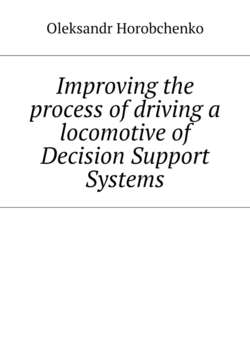Читать книгу Improving the process of driving a locomotive of Decision Support Systems - Oleksandr Horobchenko - Страница 3
2. Literature review and problem statement
ОглавлениеNowadays a number of systems of automatic driving both long – distance trains [2] and local trains have been implemented [3]. For the automation of local trains and subway trains, the company Bombardier designed a new generation of train control systems CITYFLO 650 [4], which currently operates in thirteen cities around the world. In the subways of Santiago, Paris, Hong Kong and Beijing, Alstom company is implementing its design for automated train control [5]. The project Urbalis is supposed to increase the train frequency, at the same time ensuring high safety and increased comfort for passengers. An analysis of these foreign designs allows us to conclude that the use of automated train driving systems is a promising area of research that allows us either to reduce significantly or eliminate completely the negative impact of the human factor on traffic safety. However, a common drawback of these systems is the existence of limited number of parameters that are monitored, the increase in which leads to making the algorithms of automated systems operation even more complicated, which is the cause of a considerable rise in their price. On the other hand, the readjustment, when it is necessary to take into account specific conditions of a particular section, is very difficult in such systems. The projects lack the capacity to accumulate experience and to control the traffic independently in terms of improving the indices of previous travels, that is, the self – learning function is missing. This caused the locomotive driving systems to develop in the direction of intellectualization [6]. New methods and structures of intelligent driving systems for the rail transport are being developed [7] and the methods of forecasting technical condition of the rolling stock are being improved [8]. But the cited sources do not consider the process of making decisions by a locomotive crew, although this process is one of the most important. Its successful implementation allows a considerable increase in traffic safety and reduction of transportation costs. In [9], the intelligent system of driving a subway train was developed, but in order to use it on railways, it is necessary to solve a number of additional problems, namely, to develop mechanisms of interaction between the system and a dispatcher and other trains in the section, to train the system to make driving decisions at the wide range of changes of profile and the track plan, etc.
The current state of theoretical studies, aimed at improving the driving processes on railways, makes it possible to select two directions of solving this problem. The first direction is automation (from the automation of certain operations to the introduction of automated control of technological processes). In particular, Petri nets [10], the methods of finite automata [11—13] and the assertion mechanisms are used for this purpose. The second direction is associated with the use of the methods of artificial intelligence and paying more attention not to simulating a control object, but rather to formalizing the driving activity of a person-operator [14—16]. The advantages of the second approach are the possibility of making driving decisions by the system itself under conditions of uncertainty and incompleteness of information, and the possibility of self-learning and accumulating experience.
An analysis of the scientific literature leads to the conclusion that the modern development of the theory of systems of driving a locomotive, the software and the element base does not allow achieving a fully autonomous motion of trains. A transition stage to the unmanned locomotive driving is the implementation of intelligent locomotive decision support systems. At present, theoretical framework for the implementation of this task is not sufficiently developed. Such issues as the definition of the structure of a locomotive intelligent system, development of mathematical apparatus for describing fuzzy situations when driving a locomotive, and modeling the process of the system’s self-learning have not been studied enough. Left unaddressed is the question of development of dynamic knowledge bases for locomotive decision support systems.
